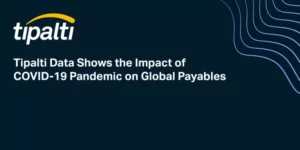Accounts Payable Automation Can Drive Sustainable Growth
A new Tipalti Insight Report (consisting of interviews with 500 finance or AP leaders in high-growth businesses) shows that many companies are struggling with the uncertain economic outlook. This is resulting in increased costs and spiraling expenses, leading to a cost of doing business crisis.
Manual and inefficient AP processes and tools are increasing the cost of finance departments. They also block high-growth companies’ ability to focus on strategic decision-making because they cannot access clean and close to real-time financial data.
Respondents indicated that end-to-end finance automation could facilitate sustainable growth initiatives. However, there still needs to be a better understanding of what this consists of, and finance leaders need to be proactive and adopt these solutions without delay.
A Pivot to Sustainable Growth
The days of companies spending significant funds acquiring new customers are over. 78% of respondents surveyed said sustainable growth was more important than growth at all costs.
This new approach requires careful management of cash, with an emphasis on prudent spending and adding long-term value.
However, inefficient AP processes are halting many companies’ progress in achieving sustainable growth. This is indicated by 81% acknowledging that improving the efficiency of their AP processes is a higher priority than it was 12 months ago.
A recent AP challenge relevant to today’s economic environment is maintaining supplier relationships while optimizing cash flow (74%). Slicker AP processes can drive down the cost of the finance function, with almost one in five (78%) recognizing that their AP function can play a crucial role in offsetting higher costs from inflation.
Inefficient AP Can Occur from Processing Invoices Through to Reconciliations
Inefficient AP processes can occur at any stage and can be even more damaging if they generate significant errors and inaccuracies.
Obtaining and validating supplier details—the earliest part of the AP journey—was flagged as being the most inefficient part of the process by 41% of those surveyed.
It’s particularly worrying that inefficiencies are most common at the beginning of AP processes, as this can have knock-on effects for transactions further on in their lifecycle. This helps with explaining why 19% of supplier invoices are currently paid late.
Companies Are Still on Their AP Journey
There hasn’t been much progress over the last 12 months in the adoption of automated AP processes.
Less than half of companies consider that any single element of their AP process has been fully or mostly automated. The most common types of AP processes to automate are payment execution (50%), supplier invoice approval (46%), and payment authorization (45%).
On average, 38% of end-to-end AP processes are still manual or paper-based, a slight decline from 43% in 2021. There’s also friction from those that have moved away from paper-based solutions, with 3.9 different logins or systems being used on average for supplier payments. This can cause delays and create errors, as well as lead to potentially damaging supplier relationships.
Another repercussion can be damage to staff morale due to AP staff having to find additional time to unpick and correct errors. This can become even more of a challenge for scaling businesses that deal with a growing number of supplier invoices.
End-to-End AP Automation Can Reduce Costs and Strengthen Financial Control
Businesses can see the benefits of end-to-end AP automation.
Almost nine in ten (89%) of US respondents think an automated AP solution will improve cash flow, with 86% of UK finance leaders believing it will lead to more timely supplier invoice payment and improved relationships, and 86% of Benelux participants think it will improve spend visibility and control.
These streamlined processes will allow the finance team to focus on higher-value tasks and provide input into strategy, aiding in response to the challenges of today’s uncertain economy and whatever comes next.
However, one of the barriers to end-to-end AP automation is a need for more understanding of its full range of activities and capabilities. Less than half of businesses (40%) know that end-to-end supplier invoice automation encompasses processing and payments.
While this is up from 2021 (30%), this is yet to convert into meaningful adoption. The most significant barrier to take up is staff having the requisite skills/training (39%). This is also likely to be influenced by two-thirds (65%) of finance or AP leaders saying they find it difficult to prioritize which AP tasks to automate.
There’s Never Been a Better Time to Introduce AP Automation
With the drive to sustainable growth, both now and beyond today’s economic uncertainty, and the urgency for AP to demonstrate its strategic value, there’s never been a better time to introduce end-to-end AP automation.




